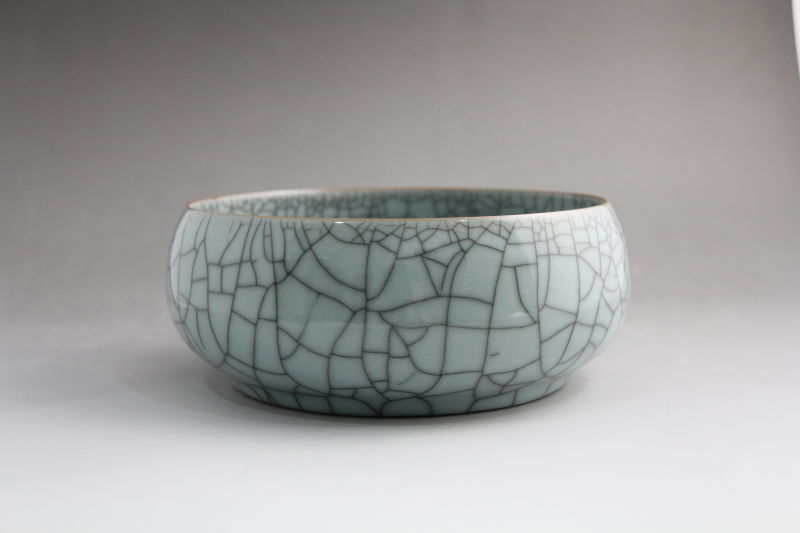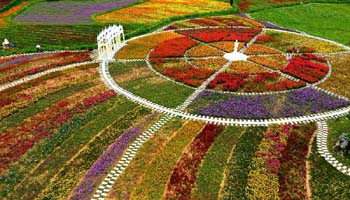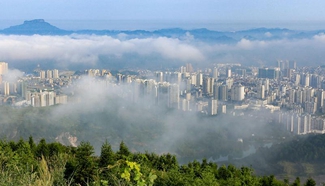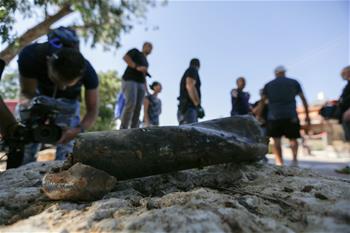
Geyao, or the elder brother ware (Photo provided by the author)
By Chen Yicheng
BEIJING, Aug. 21 (Xinhuanet) -- Preparatory work for the G20 summit has entered its countdown by the side of beautiful West Lake in Hangzhou, east China's Zhejiang Province.
The event “Wonderful G20, Zhejiang Story” highlights the fine Zhejiang cultural character, represented by unique traditional arts such as Longquan celadon.
Longquan, a city in the province, is known for its celadon producing. Archaeological discoveries have shown that its celadon can be traced back to as early as the year 220 AD with simple household wares of teapots, bowls and plates.
The golden age of Longquan celadon production came in at the Southern Song Dynasty in Chinese history between 960 AD and 1279 AD, and then production technology matured and mass production became feasible.
The beautiful ceramic products gained widespread fame when adventurers travelled along the Maritime Silk Road. They tripped all the way to markets in Southeast Asia, India, the Arab world and even East Africa.
Making celadon is an exhausting process. Simply put, five steps are needed: molding, air drying, trimming and carving, firing, and glazing.
The best celadon is made out of grey clay which could only be found in the Longquan city. Mixed with water and lime, the clay will be kneaded repeatedly until its ductility is best for molding in days.
Molding the clay into shape is quite another story which requires patience and attentiveness. Placed on plates spinning at high speed, the clay will be molded into vases, plates, cups and teapots. And then, the raw clay-wares will be placed under the sun for several weeks until it is fully dried.
Next comes the trimming and carving. The clay-wares are carefully trimmed by veteran craftsmen. The surface is often incised with motifs of peony, rose, and lotus, which represent auspiciousness and happiness in Chinese culture.
After the raw wares are trimmed and carved, they will be packed on shelves in the kiln for firing. The temperatures should be strictly controlled at around 1,000 degrees Celsius. After that the craftsman will paste them with glaze and then they will be heated up and cool down for five to six times. By then, the pump-green, transparent, and gorgeous celadon is completed.
Traditionally, Longquan celadon can be divided into two categories: Geyao, or the elder brother celadon and Diyao, the younger brother celadon.
Sounds interesting, but why it was named that way? Long time ago, there were two brothers in Longquan, Zhang Shengyi and Zhang Shenger, both good at ceramic-making. However, the elder brother's celadon wares were way better than his younger brother's.
One day, out of envy, the younger brother stealthily mixed coal ashes into his brother's clay mounds. When the celadon products were taken out from the kiln, the elder brother was frustrated to find that the celadon wares were covered with black crackles. Vertical or interlaced, the lines showed natural beauty of intricacy, however. The elder brother had no choice but to try to sell them at a discount. Surprisingly, collectible-seekers were interested in this rarely seen celadon. In fact, they were bidding high prices.
From that time on, it is quite easy for people to distinguish between Geyao and Diyao, as Geyao is always featured with irregular crackles, while Diyao is light green in color and glossy in texture.
In 2009, Longquan celadon production technique was included in the Representative List of the Intangible Cultural Heritage Humanity by UNESCO and rekindled world attention.
Today, with the support of the government and wisdom of masters of celadon productions, Longquan celadon is continuing its brilliance.











